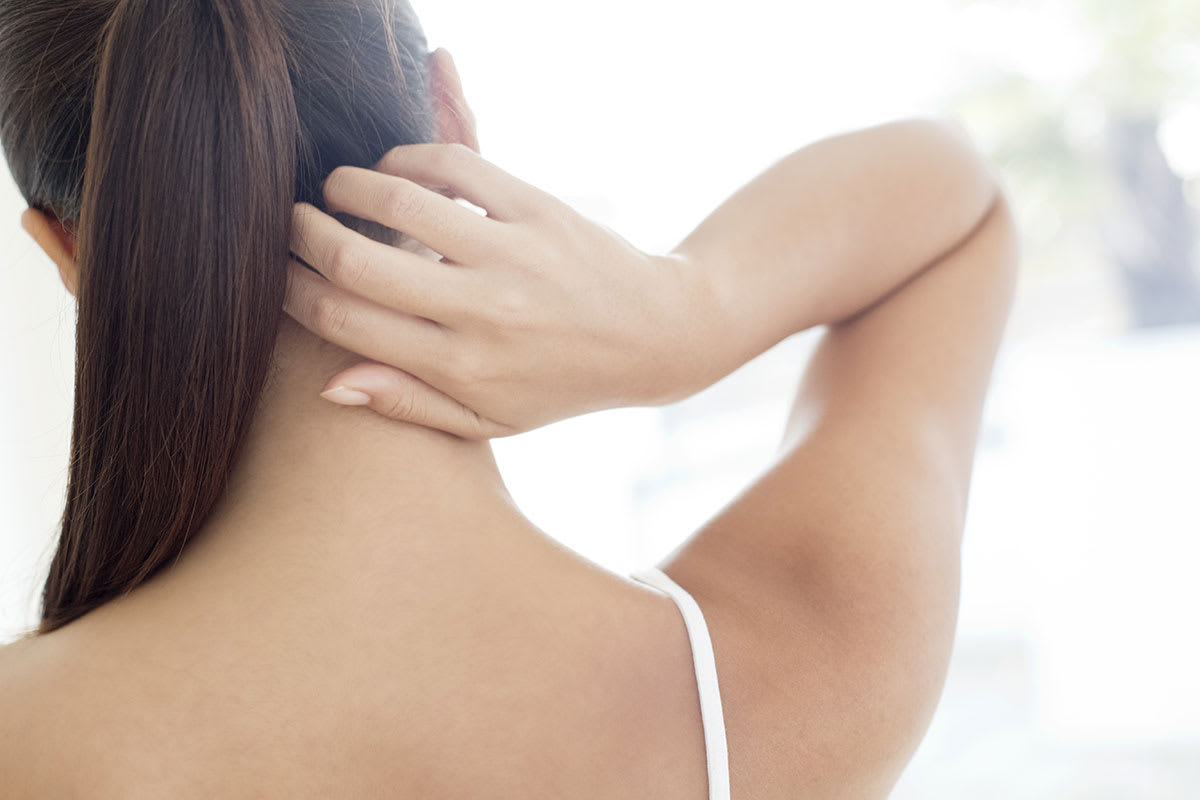Dry skin is one of the most common problems causing itching, redness and dandruff on the head. It’s not just skin diseases such as neurodermatitis and psoriatic arthritis that can weaken the skin barrier. Much more often it is aggressive cleansing that takes a toll on the scalp. Washing your hair too often with drying shampoos as well as the stress on the skin caused by fragrances, dyes and preservatives in conditioners, treatments, hair sprays etc. often lead to the healthy balance of the skin being upset.

“Every time you wash, the sebum, which nourishes the skin and keeps it supple, is removed from the scalp. The skin becomes drier. If the skin doesn’t have time to regenerate, it becomes more and more stressed. Itching and small, white scales that appear when scratching dripping onto the sweater are typical symptoms.
Use juice care products
A gentle scalp cleanse every two to three days with a mild shampoo can help. It is important to rinse the product thoroughly. Residue can irritate the scalp. The water shouldn’t be too hot.
You should also avoid high temperatures when blow-drying. You should go to the doctor if, despite appropriate care, your scalp continues to cause problems, such as being very itchy, flaky, red or even inflamed, weeping or showing bald spots.
“Then there may be a skin disease behind the symptoms, such as neurodermatitis or psoriasis,” says Schlossberger. “A lice infestation or head fungus also shows similar symptoms. Even if small wounds have already arisen as a result of scratching, a visit to the doctor is advisable.”
Oily dandruff: Yeast causes scalp inflammation
While dry scales fall fine and white from the head, oily scales are larger, stickier and yellowish in color. They are more likely to stick to the scalp and are clearly visible. Even with greasy dandruff, the scalp often itches unpleasantly and causes those affected to scratch. The cause is often increased sebum production in combination with increased growth of the yeast Malassezia furfur.
“The yeast naturally colonizes the scalp and usually does not cause any problems. If it multiplies too much, the balance on the head is tipped,” explains the dermatologist. “Shampoos that thoroughly cleanse the skin, are effective against itching and also contain an anti-fungal agent help with greasy dandruff. These should always be left on for a few minutes before being rinsed off.”
 Head fungus: Itching often accompanied by hair loss
Head fungus: Itching often accompanied by hair loss
If grayish scales appear along with itching, reddening of the skin and bald spots, this indicates a fungal infection of the scalp. Head fungus, medically known as tinea capitis, is caused by filamentous fungi (dermatophytes). “It is typical for head fungus that the affected area of skin appears to be punched out in a circle and has brittle, broken hairs,” explains Schlossberger. “To prevent the fungus from spreading further, it must be treated with an antifungal drug.” Because head fungus is transmissible, patients should avoid sharing hairbrushes, razors, towels, clothing, and hats during treatment.
As with head lice, children are particularly affected by head fungus. But adults can also have a fungal colonization on their heads – often people who have a lot of contact with animals. Animals that can transmit tinea capitis include cats, dogs, rabbits, guinea pigs and hamsters. The fungal spores reach people through stroking – and implant themselves when the skin barrier is weakened.
How to recognize head lice
Head lice are a common issue among children. Experts estimate that around one to three percent of children between the ages of three and twelve are affected by head lice. Children often put their heads together – so the little parasites can easily get from one head to the other. Contrary to what is often feared, lice do not jump, but crawl. Parents should be alert if the child constantly scratches their head – and small wounds may appear on the scalp as a result of the scratching.
A critical look provides clarity: extensive redness, small red dots (bite marks) and the adhesion of white dots in the hair (eggs) approximately one centimeter above the scalp indicate a head lice infestation. Often you can even see the lice crawling on your scalp. If you are not sure whether a lice infestation is responsible for itching and frequent scratching, you should comb your damp hair with a lice comb and wipe it off on a kitchen towel. This makes lice and eggs visible.
“If there is a head lice infestation, the families of the child’s friends as well as relevant institutions such as kindergartens, schools and sports clubs should be informed and special head lice treatment should be carried out quickly and consistently to prevent it from spreading,” advises Schlossberger.
- Not just dandruff : these diseases plague the scalp
- Take a closer look : Five common causes of itchy head
- From head to toe : Seven parts of the body that often itch – and what helps
